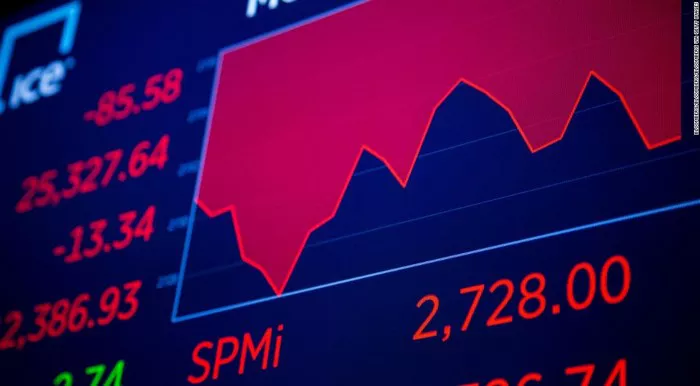The Asian session is one of the three major trading sessions in the global Forex market, alongside the European and North American sessions. It is also known as the Tokyo session due to Tokyo’s significant role in regional trading. Understanding the timing, characteristics, and strategies for trading during this session can help Forex traders make informed decisions and capitalize on unique opportunities.
Overview of the Asian Session
The Asian session is the first trading session of the global Forex market each day. It begins with the opening of the Sydney market and transitions into the Tokyo market, which is the most active part of this session. The session is also known for its moderate liquidity and volatility.
Sydney Market Hours: 23:00 GMT to 06:00 GMT.
Tokyo Market Hours: 00:00 GMT to 09:00 GMT.
Singapore/Hong Kong Market Hours: 01:00 GMT to 09:00 GMT.
During this period, major Asian financial centers such as Tokyo, Sydney, Singapore, and Hong Kong are active. Tokyo, being the largest financial hub in Asia, contributes the most trading volume.
Characteristics of the Asian Session
The Asian session is known for its relatively calm and less volatile market conditions compared to the European and North American sessions. Here are some key features:
Lower Volatility: The market movements during the Asian session are generally more subdued, making it suitable for traders who prefer a more stable environment.
Range-Bound Movements: Prices often consolidate within a range during this session, providing opportunities for range trading strategies.
Regional Focus: Currencies such as the Japanese Yen (JPY), Australian Dollar (AUD), and New Zealand Dollar (NZD) are more active during this time.
Economic Data Releases: Economic news from Japan, Australia, and New Zealand can significantly impact market movements.
Why Trade the Asian Session?
The Asian session offers several advantages for Forex traders:
Stable Market Conditions: The lower volatility makes it easier to predict price movements and manage risk.
Trading Opportunities: Range-bound strategies and news-based trading can be highly effective during this session.
Carry Trades: The Asian session is ideal for carry trade strategies, where traders can capitalize on interest rate differentials.
However, there are also some disadvantages:
Lower Liquidity: The trading volume is generally lower compared to the European and North American sessions.
Smaller Price Movements: Traders may need to be more patient and focus on smaller profit targets.
Best Currency Pairs to Trade During the Asian Session
Certain currency pairs are more active during the Asian session due to their regional significance:
USD/JPY: This pair is highly active and volatile during the Tokyo session, making it a popular choice.
AUD/USD: The Australian Dollar is actively traded during the Sydney session, providing good opportunities.
NZD/USD: This pair is also popular due to New Zealand’s economic activity during this session.
EUR/JPY and GBP/JPY: These cross pairs involving the Japanese Yen can also be active.
Trading Strategies for the Asian Session
To maximize trading opportunities during the Asian session, traders can employ several strategies:
Range Trading: Given the range-bound nature of the market, traders can identify support and resistance levels and trade within these boundaries.
Breakout Strategies: As the session transitions to the European session, traders can prepare for potential breakouts when liquidity increases.
News-Based Trading: Economic releases from Japan, Australia, and New Zealand can create short-term volatility, providing opportunities for news traders.
Importance of Economic Data Releases
Economic data from major Asian economies can significantly impact the Forex market during the Asian session. Traders should pay close attention to:
Japanese Economic Data: Releases such as GDP, inflation rates, and employment data can move the JPY.
Australian Data: Key indicators like interest rate decisions and trade balance reports can affect the AUD.
Chinese Economic Data: As the world’s second-largest economy, China’s economic indicators can also influence regional currencies.
Risk Management During the Asian Session
Given the lower volatility and liquidity, traders should consider the following risk management tips:
Set Realistic Profit Targets: Smaller price movements mean traders should adjust their profit targets accordingly.
Use Tight Stops: Given the lower volatility, tighter stop-loss orders can help protect against sudden price movements.
Monitor Overlaps: The overlap with the European session (around 07:00 GMT) can increase volatility, so traders should be cautious during this period.
Impact of Daylight Saving Time
Daylight Saving Time (DST) can affect trading hours. For example, London shifts to GMT+1 during the summer, while Tokyo does not adjust its time. This can complicate trading schedules, and traders should carefully monitor the opening and closing times of markets.
Tips for Trading During DST
To adapt to the effects of DST on Forex trading, traders need to adjust their strategies and risk management. For example, they may need to review their stop-loss and take-profit orders to account for potential price gaps when the market opens at different times. Traders should also:
Stay Informed: Be aware of DST changes in your region and the regions where you trade.
Adjust Your Trading Plan: Modify your trading plan to accommodate changes in market hours, volatility, and liquidity during DST transitions.
Monitor Economic Events: Keep an eye on economic events and central bank announcements, and ensure you are aware of any schedule changes due to DST.
Conclusion
The Asian session is a unique period in the Forex market, characterized by lower volatility and a focus on regional currencies. While it may not offer the same level of liquidity as the European or North American sessions, it provides opportunities for traders who prefer a more stable environment or who specialize in specific regional currencies. By understanding the characteristics of the Asian session and adapting trading strategies accordingly, traders can effectively navigate this important part of the global Forex market.
By staying informed about market hours, economic data releases, and the impact of DST, traders can make the most of the Asian session and enhance their overall trading performance.
Related topics:
What Time is the New York Session in Forex?






























